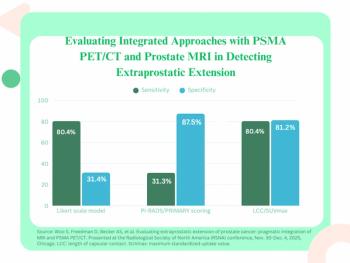
Definition CT sales skyrocket on novel approach
Siemens Medical Solutions is installing its dual-source CT in new, uncharted territory -- hospital departments the company has never before approached -- and is finding a welcome reception for the clinically versatile platform.
Siemens Medical Solutions is installing its dual-source CT in new, uncharted territory - hospital departments the company has never before approached - and is finding a welcome reception for the clinically versatile platform.
Since the Definition CT was introduced commercially late last year, Siemens has installed more than 220 units worldwide, many of them to orthopedic, urology, and emergency departments.
"This platform is much more flexible and far more adaptable to clinical requirements than anything we have had before in CT," said Peter Kingma, Siemens vice president of CT.
The $1.85 million street price of the system has not been a problem, according to Kingma, who said the scanner's unique features appeal to groups outside of radiology.
Orthopedists use the two x-ray beams at different energies to simultaneously visualize tendons, cartilage, and bone. Urologists use the scanner to distinguish kidney stones caused by uric acid from ones of other origin - an important distinction, as the treatments are markedly different.
Emergency departments use the Definition CT to diagnose patients complaining of chest pain, Kingma said. Its high spatial resolution and 83-msec temporal resolution makes the device a one-stop shop for such evaluations.
"You can do a full-blown rule-out in one examination of any of the dread diseases associated with chest pain," he said.
The Definition CT is also finding a role in handling obese patients. Given its 78-cm-wide gantry and a patient table that is capable of holding 600 pounds, virtually any patient can be examined.
These novel characteristics have more than offset the hefty price tag of the device, which Kingma describes as the "most expensive CAT scanner we have ever sold." Unless a hospital is particularly strapped for cash, the price is usually not a stumbling block.
"If there is any flexibility in the funds, I seldom find it a problem to justify the financial return," he said.
The system has become so popular that it often beats out its less powerful - but more affordable - kin, such as Siemens' 64-slice CT.
"The Definition has had a massive adoption," Kingma said.
Newsletter
Stay at the forefront of radiology with the Diagnostic Imaging newsletter, delivering the latest news, clinical insights, and imaging advancements for today’s radiologists.



























